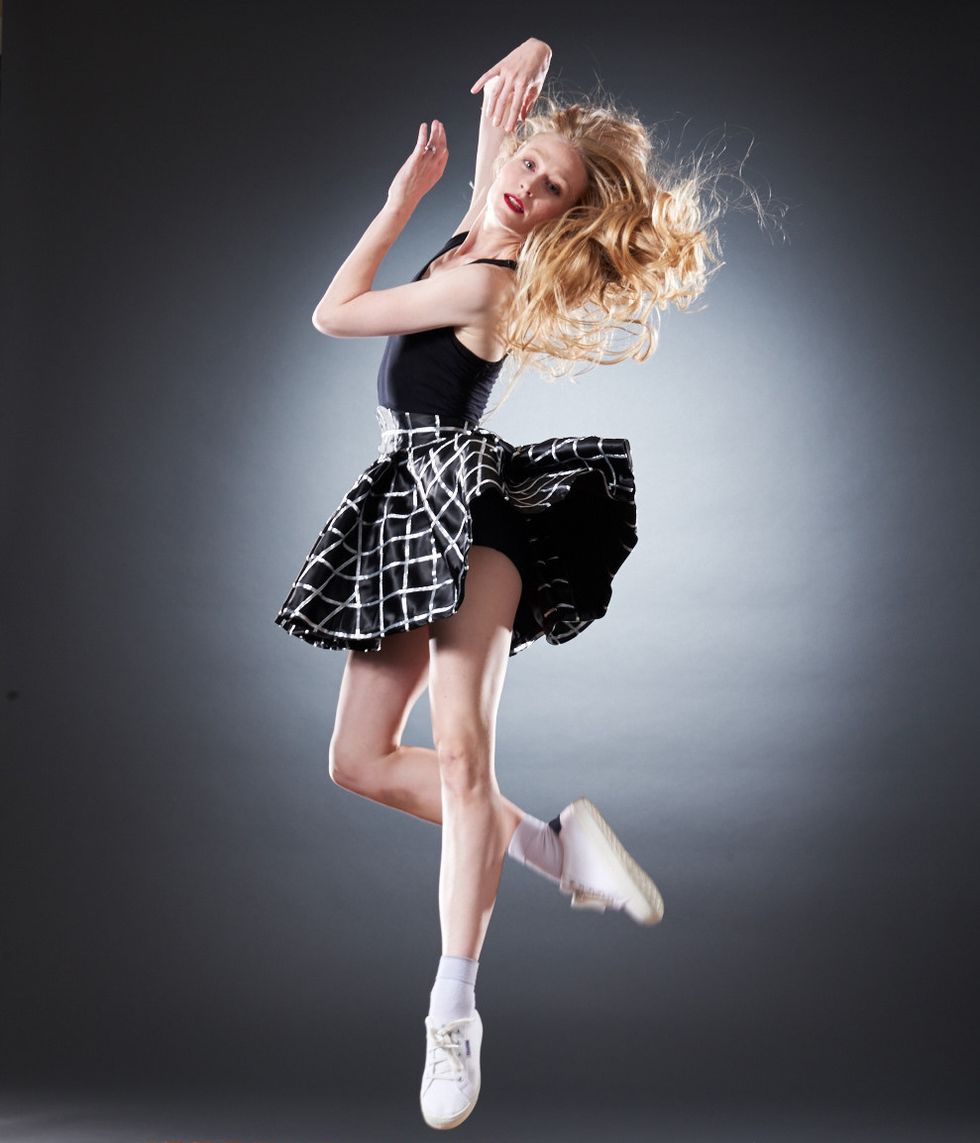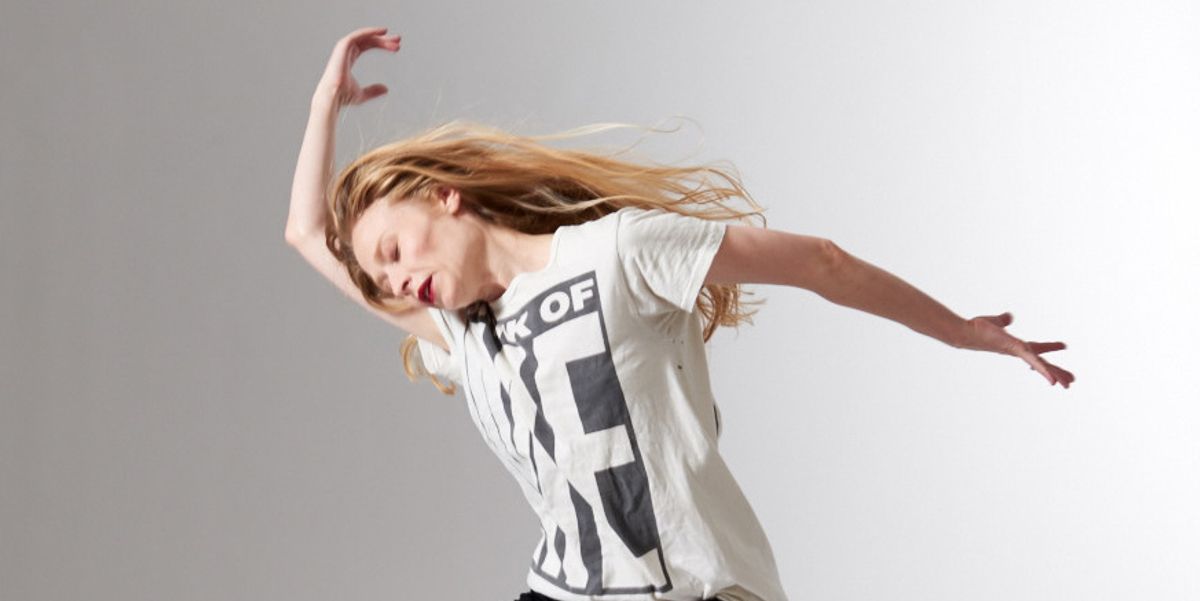Janie Taylor's Second Chapter—In Sneakers
Janie Taylor didn’t know if she’d ever return to the stage. But that’s exactly where the former New York City Ballet principal has found herself: Nearly three years after retiring, she is performing again, as a member of L.A. Dance Project.
Taylor officially debuted with the company at its December 2016 gala in Los Angeles, then performed in Boston, via live stream from Marfa, Texas, and at New York’s Joyce Theater before heading off on tour dates in France, Singapore, Dubai and beyond.
“She is wildly interesting to watch—and not conventional,” says LADP artistic director Benjamin Millepied. “There are films of Suzanne Farrell dancing, where you feel like the music is coming out of her body,” he says. “I think Janie has that same kind of quality.”
But dancing is no longer enough for Taylor. At LADP, she has carved out a unique, multifaceted artistic life that ranges from costume design to répétiteur work. “I really love doing and learning all these different things,” she says, “and I also still love to dance.”
Millepied created some of his first works on Taylor when he was a dancer at NYCB, and he always hoped she would dance for him again. “Even at my retirement party, Benjamin was like, ‘Can you come and dance with us?’ I was like, ‘What are you talking about?’ ”

Nathan Sayers
Her new artistic life is another step on a journey that has always been unpredictable. In 2004, as she was reaching the peak of her NYCB career, she was sidelined by what turned out to be a rare autoimmune disorder that prevents blood from clotting. She was prescribed steroids and, in 2005, had surgery to remove her spleen.
She struggled with muscle strains as her body was healing slowly and injuring easily. But by 2008 she was dancing full-time again, reclaiming her leading presence in favorite ballets like La Valse, Stravinsky Violin Concerto and La Sonnambula.
And then, at 33, she retired. She and her husband, fellow NYCB principal Sébastien Marcovici, danced their farewell performance together in March 2014. “I loved everything I did, but it was starting to feel predictable,” she says, reflecting on the roles she was cast in. “Before you’re a principal, everything’s new all the time, and it’s exciting, and you feel pushed,” she says. “That was something I wasn’t feeling so much anymore.”
At the time, Millepied could see that something was missing. “She didn’t dance as much as she should have,” he recalls. “Essentially, she grew a little bit uninspired.”
Taylor was curious about what opportunities the wider world might offer. She was also adamant about not choosing a new profession right away. “I wanted to find out what I was inspired by,” she says. “One thing was clear though: I have to spend most of my time in a theater. It’s where I feel happiest.”
Millepied invited Marcovici to become ballet master for him at LADP and then Paris Opéra Ballet, so in 2014 the couple began a 21-month adventure in Europe, during which Taylor was teaching and setting ballets but stopped taking regular classes. “I’m pretty particular about what class I want to take, I’m such a Balanchine person,” she says of her limited options in Paris. “Plus they have those crazy rakes!”
Time off had unexpected benefits. “You let go of a lot of stresses,” she says. “When you’re dancing a lot, you’re so afraid of getting an injury, or making it through this hard day.”
Prior to her retirement Taylor had begun dabbling in costume design, and soon after stepping away from the stage she began receiving commissions from Millepied, Justin Peck, Christopher Wheeldon and Joshua Beamish. “Helping to create a world that exists only onstage in that one piece, through what the dancers wear, is a really fun way to collaborate,” she says.
And while she was anchored in Paris, Taylor found herself all over the map when Millepied and Peck called on her to set their works on companies like Staatsballett Berlin, Dutch National Ballet and Miami City Ballet. “It was really cool to see how other companies worked, to see what the dancers were like,” she says.
Teaching the ballets she loved, like Peck’s Year of the Rabbit, also got her back into dancing in surprising new ways. “I was teaching a boy’s solo in one of Justin’s pieces, and I would do the whole thing, men’s steps, for two hours,” she recalls. “I was like, ‘Whoa.’ I was doing double tours, because there wasn’t something I had to get to at the end of the day, or the next day. My mind just wasn’t working in that way anymore, and it allowed me to not limit myself.” She realized how much she missed the physicality and athleticism of dance.
Carla Körbes, a close friend since they were in the NYCB corps together, describes Taylor’s transformation as mental and emotional, as well as physical. “When you are in a big company, you are stuck on this schedule, and also in pain,” she says. “Now she gets to decide, ‘I’m gonna feel who I am again. I’m gonna be creative.’ And guess what? Her body feels better.”
When Millepied was winding down at POB and preparing to return to the helm of LADP, Taylor and Marcovici began the process of relocating to Los Angeles—”I love the heat,” says Taylor, a Houston native. While setting Millepied’s ballets kept her busy, she also decided she was ready to join the company.
“I’ve always loved doing his movement,” she says. So far, she has performed pieces by Millepied and Peck, and she may go back on pointe, as well. “I may also try one of the more contemporary pieces in our rep—I like that there are possibilities.”
Taylor thrives on the varied challenges and constantly changing atmosphere of a small, ambitious company, and on Millepied’s ever-expanding reach. “He can be really spontaneous,” she says, “and that appeals to me, to suddenly have another thing to figure out and do.”

Korbes and Taylor. Photo by Patrick Fraser, courtesy The Chinati Foundation
From one day to the next she might be setting dances, performing, or helping with rehearsals or costume fittings. Millepied says he may even have her work on the set of Carmen, a feature film he’s directing next year, organizing extras in group movement. “I could totally trust her to help me do that,” he says. “She has a really good eye.”
He feels that Taylor is coming back into her own. “There is this electricity,” he says, “a real passion. I feel like I’m seeing that again.”
Körbes sees it too. “Janie is honoring that she’s not totally done with it, that she has more to give,” she says admiringly. “It takes a lot of courage to put yourself out there again. That’s the thing about Janie—it’s not about what people are gonna say, it’s about what she needs to do.”
Subscribe to get the print edition!





